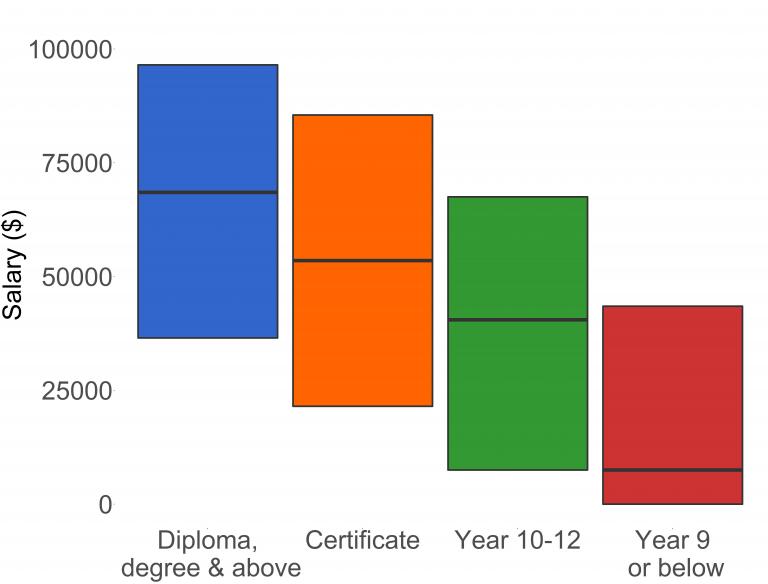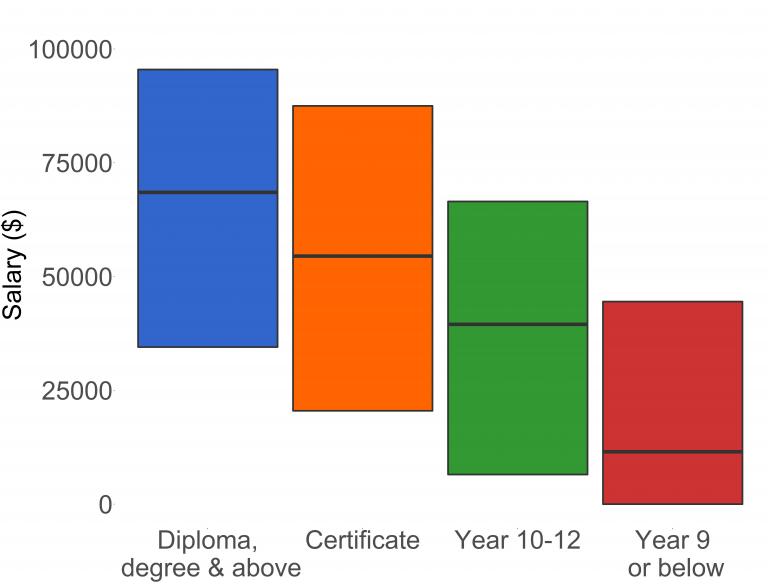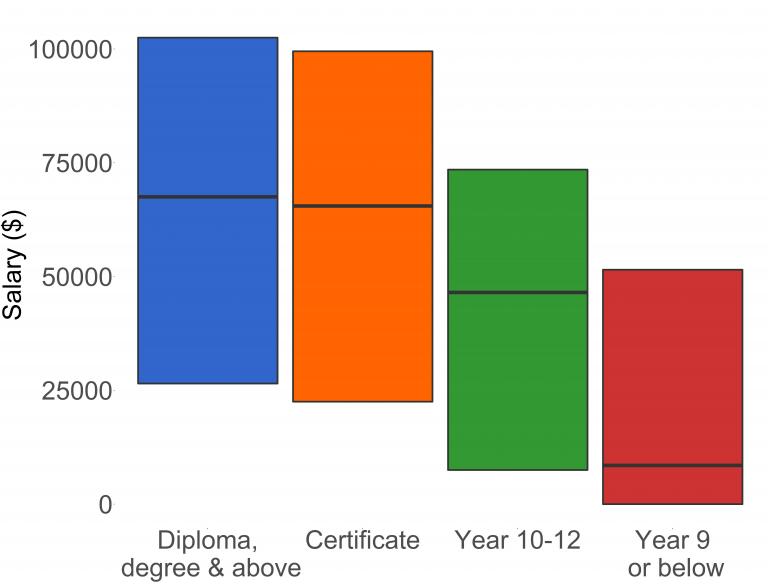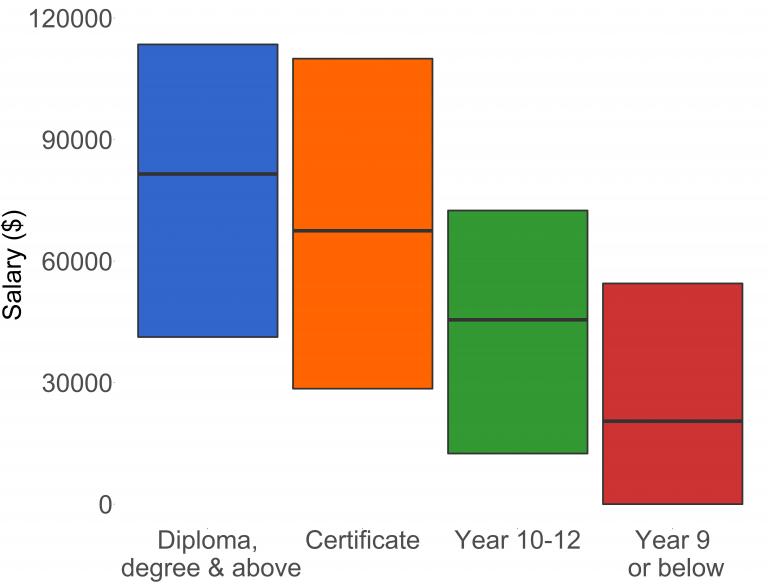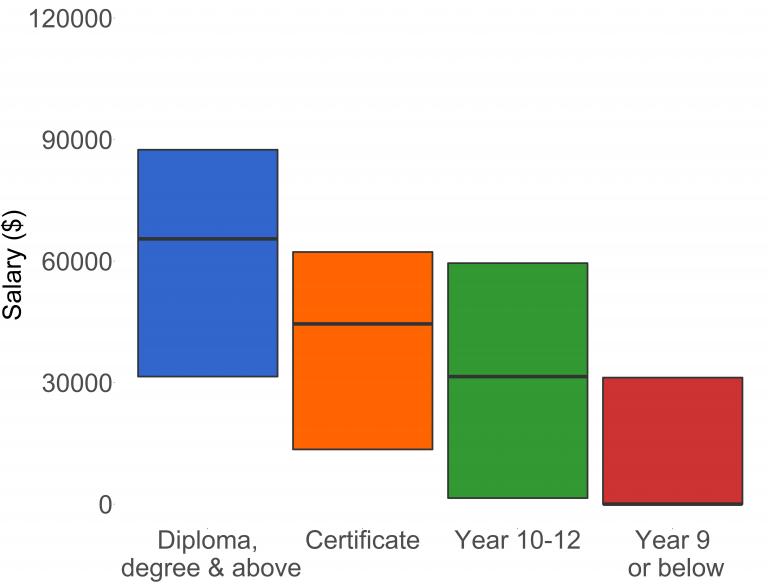
Indigenous rights and interests are a significant proportion of the rural and conservation areas (30%) in this region. Another 17% of the land area contains recognised Indigenous cultural heritage sites. There are jobs in the bush and in town for Indigenous workers who have finished secondary school and have completed post-school education or employment-training (Figure 1).
Figure 1 Finishing school helps Indigenous people get a job in the bush or in town in the Darwin region (MADIP)
| Rural | Urban |
|---|---|
In the Darwin region Indigenous employees are particularly attracted to occupations that involve caring for the health of people and country (Table 1). This insight is potentially valuable for employers who seek to design and offer jobs that attract and retain the local Indigenous workforce talent.
|
Occupation |
Proportion of employees who identify as Indigenous |
| Park ranger | 50% |
| Family support worker | 44% |
| Social security assessor | 39% |
| Liaison officer | 31% |
| Community worker | 27% |
| Health promotion officer | 27% |
| Clerical and office support worker | 24% |
| Call or contact centre operator | 24% |
| Labourers (construction and mining) | 18% |
| Labourers (builders) | 17% |
It is worth noting that salary levels are generally less for Indigenous workers than non-Indigenous workers with similar education profile.
Figure 2 Salary profile of Indigenous and non-Indigenous people who work in the Darwin region by education (MADIP)
| Indigenous people | Non-Indigenous people |
|---|---|
Indigenous women in the workforce generally receive a lower salary than their male Indigenous colleagues with similar education profiles (Figure 3).
Figure 3 Salary profile of Indigenous men and women with similar educational profiles who work in the Darwin region (MADIP)
| Male | Female |
|---|---|




